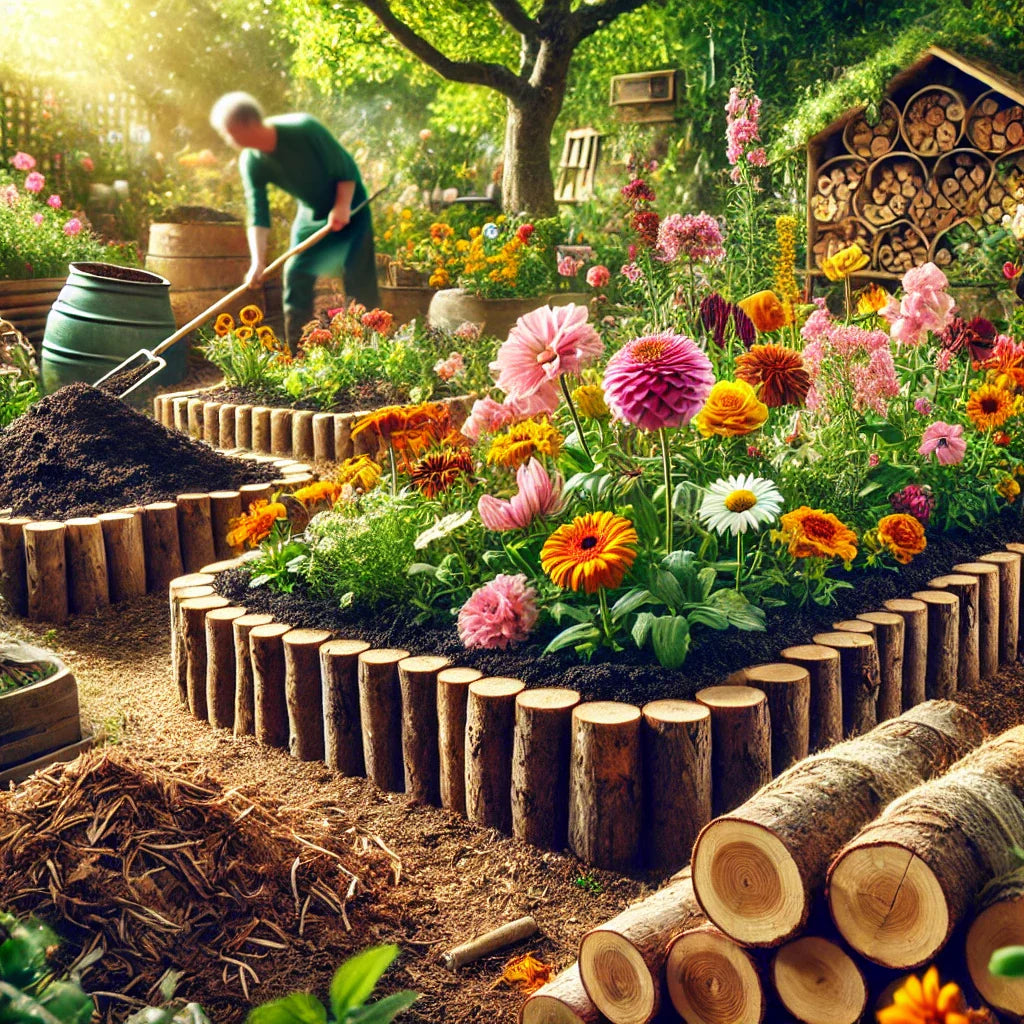
The Best Peat-Free Alternatives for Growing Flowers: Sustainable Gardening with Loyal to the Soil
Share
More and more gardeners are rethinking their choices, not just for better blooms but for a healthier planet. While gardening is often seen as an eco-friendly activity, some common practices—like using peat-based compost—can have a major environmental impact.
If you're planning a cut flower garden or starting with easy-to-grow flowers from seed, it's time to consider what’s in your growing mix. Peat has long been a go-to for plant growth due to its nutrient content, but harvesting peat releases stored carbon, contributing to climate change. This is why many gardeners are switching to peat-free alternatives.
At Loyal to the Soil, we specialize in biological soil assays using the Soil Food Web method to help growers maximize soil health naturally. In this guide, we’ll break down why peat-free growing matters and explore the best alternatives for nurturing vibrant, sustainable flowers.
Why Go Peat-Free?
You’ve probably heard the term 'peat-free' floating around in gardening circles, but what does it really mean? First, let’s break down what peat is and why its use is controversial.
Peat is an organic layer of soil that forms over thousands of years from decomposed plant material. While rich in nutrients, peat bogs also act as massive carbon sinks. When peat is harvested, this carbon is released into the atmosphere, accelerating climate change.
"Peat bogs are one of the largest natural carbon stores on Earth," explains Ren Elizabeth, sustainable gardening expert from Eco-Friendly Homestead. "Harvesting peat not only reduces this critical resource but also destroys habitats that take centuries to regenerate."
Given the urgent need to protect natural carbon sinks, finding sustainable alternatives to peat is more important than ever. Fortunately, there are several excellent options that provide the nutrients and structure flowers need without harming the environment.
The 3 Best Peat-Free Alternatives for Growing Flowers
Creating the perfect peat-free soil mix may require some trial and error, but these three alternatives offer a great starting point:
1. Homemade Compost: A Nutrient Powerhouse
Making your own compost is one of the most sustainable and rewarding ways to build healthy soil. Not only does it recycle food scraps and garden waste, but it also fosters microbial life essential for strong plant growth.
"Rich in nutrients and beneficial microbes, compost is an excellent peat alternative," says Ren. "Plus, composting itself is an eco-friendly practice."
If you're new to composting, setting up a bin in your garden is easy. Be sure to add a mix of greens (nitrogen-rich materials like coffee grounds and grass clippings) and browns (carbon-rich materials like dry leaves and shredded paper) to keep things balanced.
Pro Tip: For even better aeration and moisture retention, mix compost with coconut coir and vermiculite. These additions improve drainage and soil structure, making it easier for flower roots to thrive.
2. Hugelkultur: A Low-Cost, High-Impact Solution
Looking to build a raised flower bed? Consider hugelkultur, a centuries-old technique that layers organic materials like logs, sticks, and compost to create a fertile, moisture-retaining mound.
"Hugelkultur is perfect for taller raised beds," says Ren. "It starts with logs and wood chips as a base, then layers on leaves, manure, and compost. This method builds soil over time, reducing the need for fertilizers and irrigation."
The technique originated in Germany and Austria, with ‘hugelkultur’ translating to ‘mound culture.’ As the lower layers decompose, they release nutrients slowly, making this an excellent long-term solution for flower beds.
Note: Because the organic materials break down over time, you’ll need to occasionally top up your hugelkultur bed with fresh compost.
3. Rice Hulls: A Lightweight, Sustainable Choice
When starting flower seeds indoors or planting in containers, good drainage is essential. Peat is often used to improve aeration, but a more sustainable alternative is rice hulls.
Rice hulls are the hard outer shells of rice grains, a byproduct of rice milling that is widely available and compostable.
"I’ve had great success using rice hulls mixed with compost for both seed-starting and container gardens," says Ren. "They absorb moisture while improving aeration, which is key for healthy root development."
Another bonus? Rice hulls can help prevent fungus gnat infestations when used as a mulch on top of potted plants.
FAQs
Can You Use Leaf Mold to Grow Flowers?
Yes! Leaf mold—decomposed leaves collected from your yard—makes an excellent seed-starting medium. While low in nutrients, it retains moisture well, helping seeds germinate successfully. However, once your seedlings develop, you’ll need to transplant them into a more nutrient-rich soil mix.
Need Help Understanding Your Soil?
If you’re switching to a peat-free mix and want to ensure your soil has the right microbial balance, Loyal to the Soil offers biological soil assays using the Soil Food Web method. Our testing helps growers optimize soil health for long-term sustainability.
These are just a few of the best peat alternatives for growing flowers sustainably. Ready to level up your soil game? Get in touch with Loyal to the Soil for expert soil analysis and custom recommendations tailored to your garden’s needs.
By embracing peat-free alternatives, you're not just improving your flower garden—you’re making a meaningful impact on the environment. Whether you choose compost, hugelkultur, or rice hulls, your plants (and the planet) will thank you!
1 comment
Very interesting read, Thank you